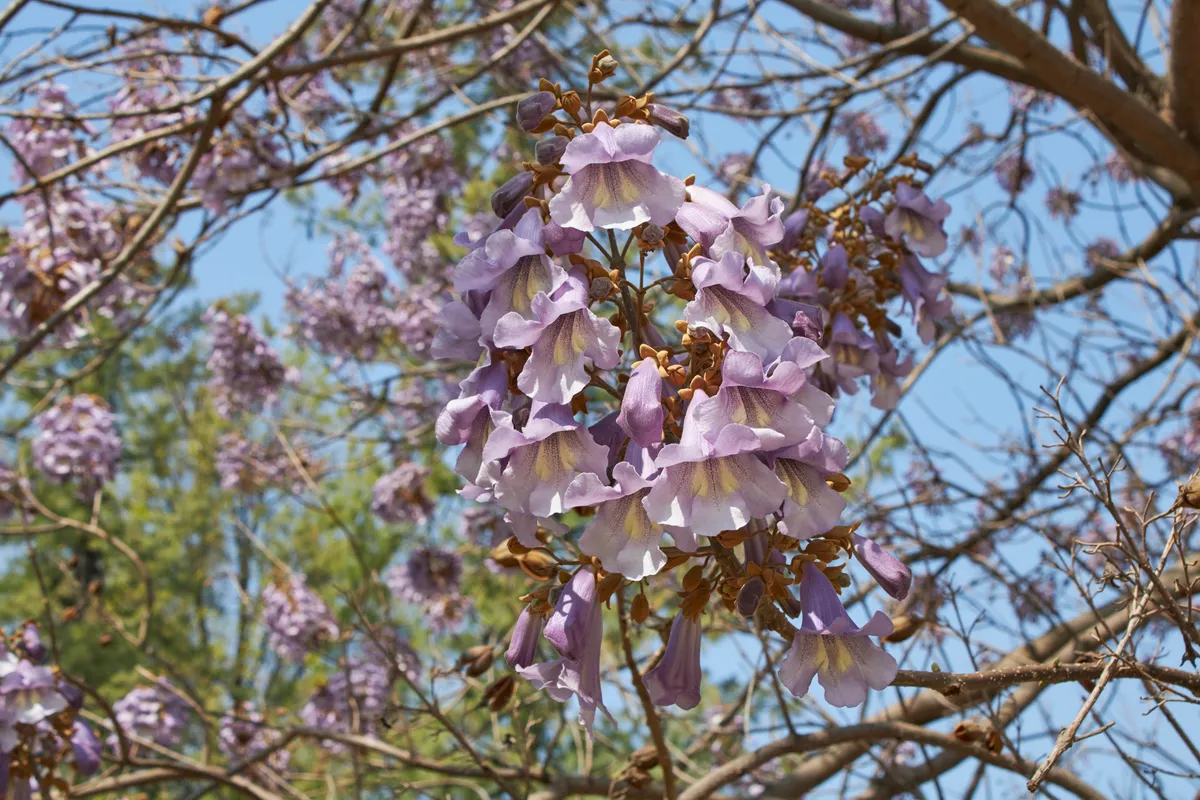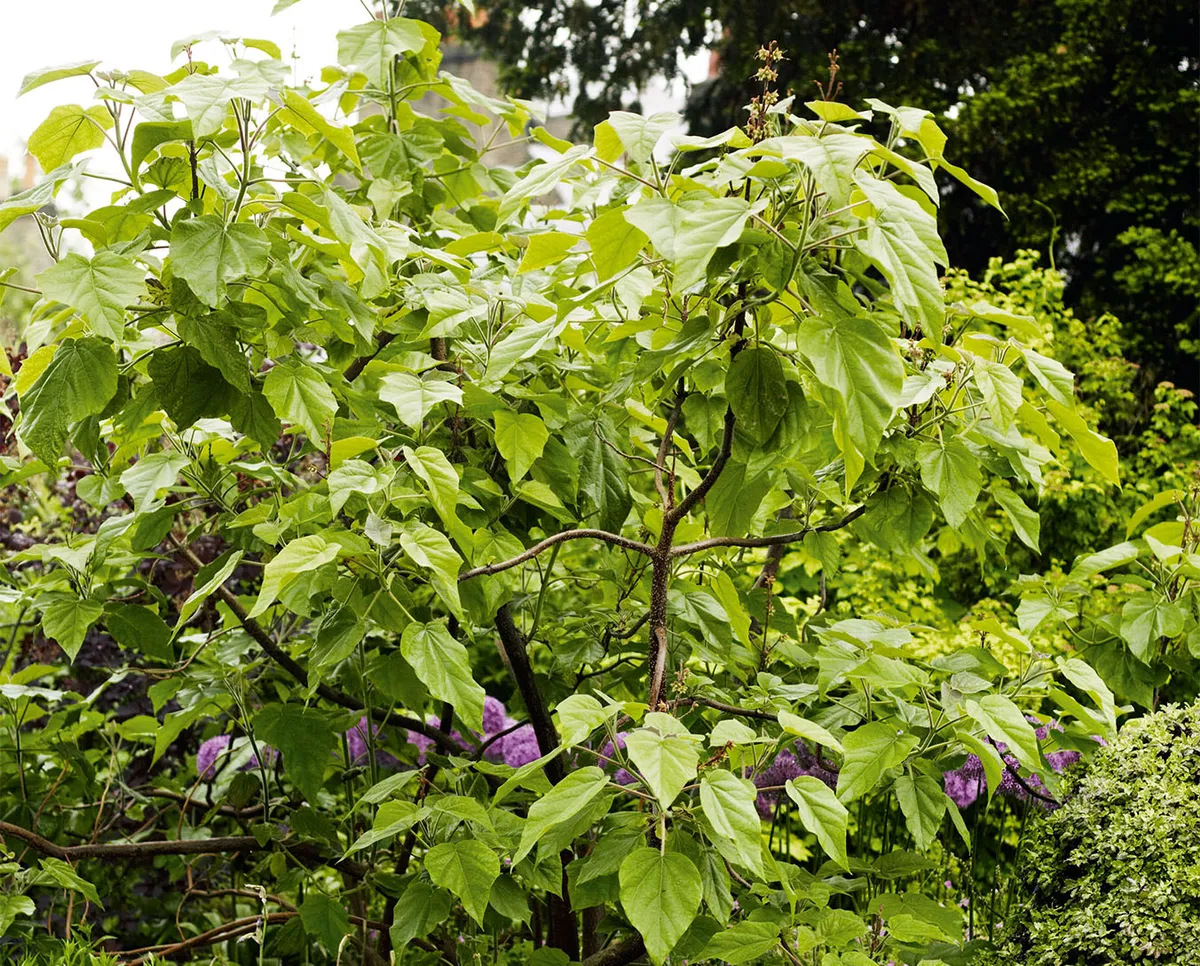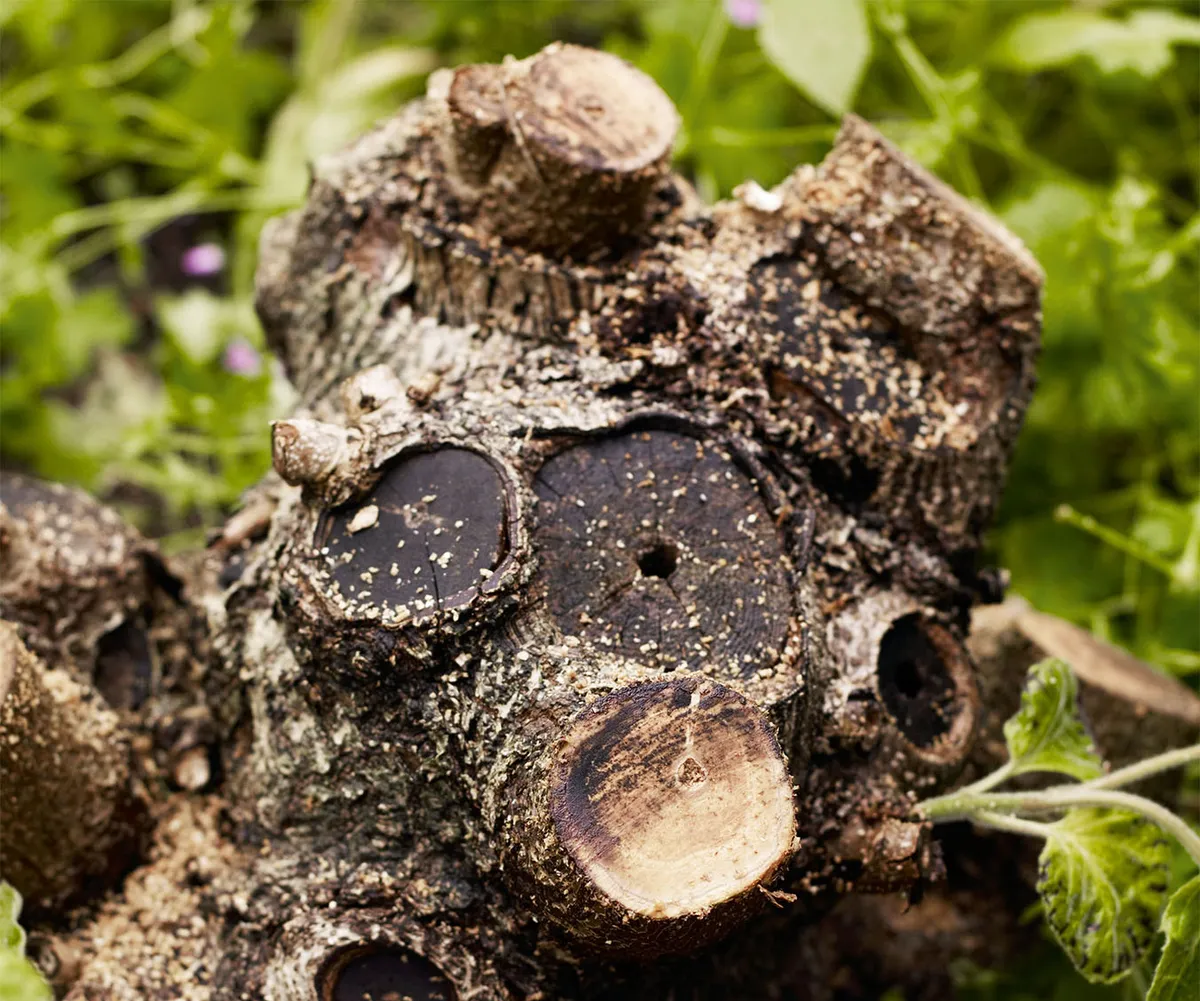Paulownias or foxglove trees – including Paulownia tomentosa, Paulownia fortunei and Paulownia kawakamii – are impressive, beautiful trees with purple, scented, foxglove-like flowers in late spring. In their native China they are prized for their wood.
Foxglove trees are fast growers that can reach up to 26m tall if left unpruned, so are only suitable for very large gardens and estates. They are often coppiced to keep them at a manageable size, and to encourage the giant leaves that go with the post-pruning growth spurt, although this will sacrifice flowers.
How to grow a foxglove tree

Where to grow a foxglove tree
Paulownia makes an exotic impact in a border, as a backdrop to delicate summer perennials or if coppiced, combined with other bold foliage plants for a dramatic or jungle effect. Grow it in full sun or dappled shade in a sheltered spot. It will grow in most moist, well drained soils. Protect young trees from frost.
Coppicing a foxglove tree
Coppicing a foxglove tree will mean that it produces leaves that are 60cm across, on shoots that are 2.5m tall. Bear in mind that forcing the tree to continually produce new fruits will sacrifice the flowers, which only grow on mature trees.
Paulownias can be coppiced late in the spring. If you plan to coppice a mature tree, check it doesn’t have a tree preservation order, and ask an approved arboriculturist to do the initial pruning.
Tackle the pruning in stages.
- First remove the outer branches with a small pruning saw to get access to the main stems. Cut larger stems using a jump cut to remove cleanly. A jump cut is actually three cuts. With the first two – upwards halfway from beneath, then downwards – remove the bulk of the stem, except for a short stub; the third cut removes this remaining stub.
- Work your way down to the base of the plant, leaving a clean, smooth stool no more than 10cm above the ground.
- Mulch straight after coppicing and use a liquid foliar feed through the first growing season.
By the season’s end it will have produced a lush set of new leaves. A coppiced Paulownia grows as broad as it is tall, so allow 3-4m for it to grow.
Read our piece on why you should coppice.
1
Spring: after flowering

Before cutting, this Paulownia kawakamii is 3m wide and 4m high. Previous coppicing has increased the size of the leaves, encouraging the branches to grow outwards, in search of light.
Spring: coppicing

The final stage of coppicing looks brutal, but it’s vital to leave a clean, smooth surface. Damaged wood makes it easier for disease and rot to creep into the stool.
Summer: outsized foliage

After one season, the new growth is abundant. Individual leaves are huge, some as much as 24cm in diameter.